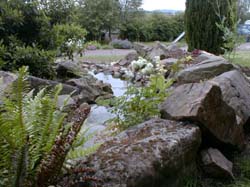Before we lined the main pond we worked on the watercourse. We used a thick butyl liner with an underlay to minimise the risk of puncture from unlderlying stones. We dug out the watercourse in a series of stages, each pool being 10 to 15cm deep with the front edge deeper than the rear.
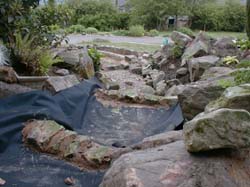
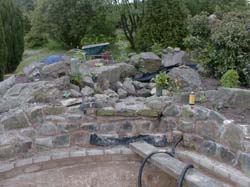
We used large rocks to make a deeper channel for the water course and build stone weirs at the front edge of each stage. These would slow down the water flow and allow pools to form behind them.
The liner was curled up the edges of the rock channel and backfilled with gravel. Smaller stones were then used to hide the liner and provide extra feature in the small pools of the water course.
Finally the botton of the pools were covered with course gravel. Crevices and gaps in the rocks were identified for planting with ferns and other suitable, moisture loving plants.
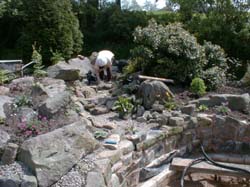
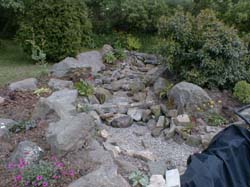 The water course is complete, except for the water. The water will be pumped up from the pond, via a burried, flexible pipe. into the top pool to give the impression of a spring similar to a natural spring in our neighbouring field.
The water course is complete, except for the water. The water will be pumped up from the pond, via a burried, flexible pipe. into the top pool to give the impression of a spring similar to a natural spring in our neighbouring field.
